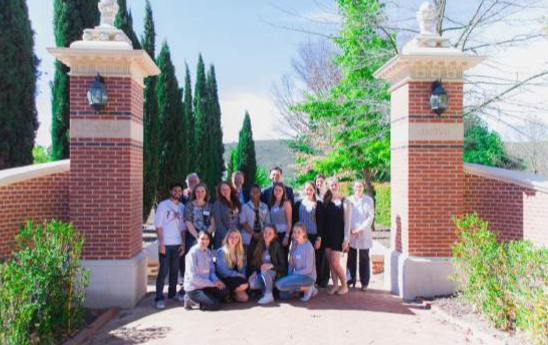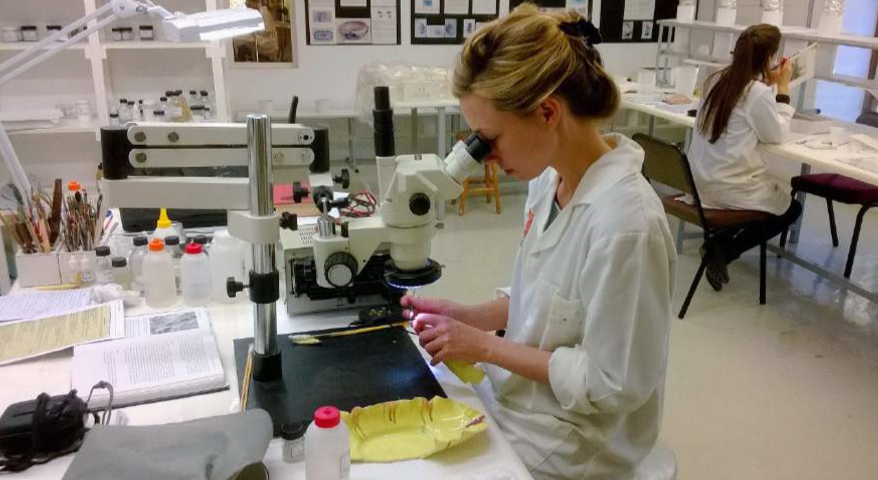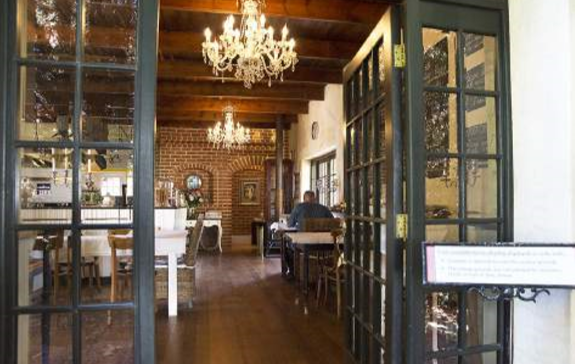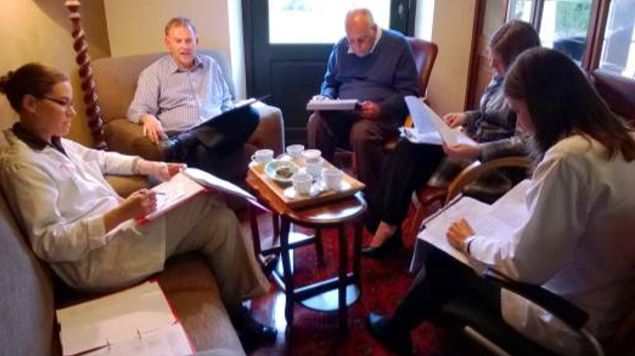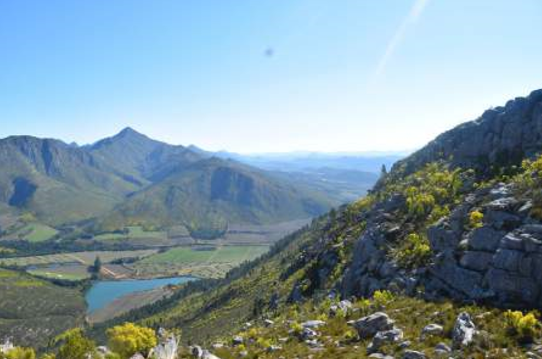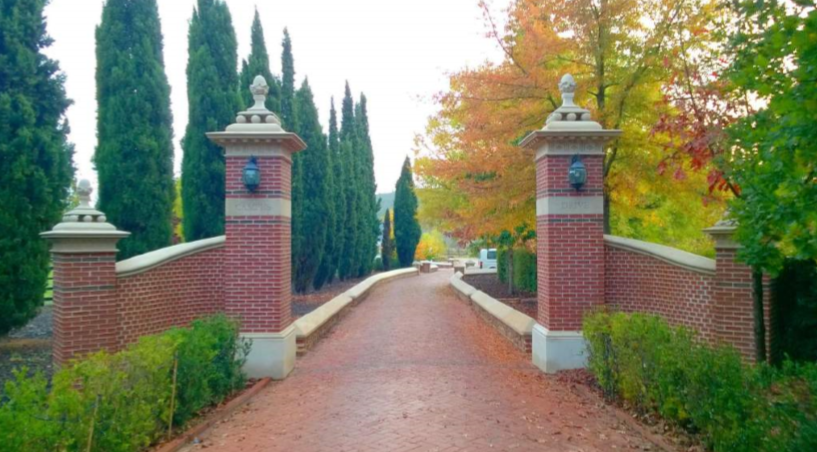
Heritage Science... A fascinating, demanding and compelling field, and - in South Africa - much in need of populating still. But let us start at the beginning:
Barbara Appelbaum, a celebrated and published US conservator, perhaps framed it best in her book Conservation Treatment Methodology where she writes:
Emblematic of the dual nature of objects is the caption of a photograph in a published paper about an ivory figurine plagued by efflorescence of soluble salts. The label reads: "Salty Egyptian Concubine." Surely, it was the ivory rather than the concubine that was salty. The dual nature of art has been described by Susan Sontag. "Art," she observes, "is not only about something; it is something. A work of art is a thing in the world, not just a text or commentary on the world." All objects, in fact, are both "something" and "about something." Their histories reveal changes in both their physical nature and their cultural meaning which interact with each other in complex ways. A useful object, for example, becomes art when moved into a museum, where it is transformed into something to be looked at. But the way museum-goers see the aesthetic qualities of a utilitarian object is partly related to its previous function. Viewers "read" a glass pitcher not only by appreciating its color, shape, and decoration, but also by reflecting on the way it would feel in their hands, the way it would transfer heat, and the way it would pour. An understanding of the interactions between the material and non-material aspects of an object is vital to its successful treatment. The mix of the tangible and intangible is a major part of what makes conservation fascinating. On the one side is scientific fact that can be verified by quantitative investigation. On the other side are the attitudes of owners and viewers that can only be studied through the qualitative methods of the liberal arts. Conservators need to give both sides their due, while at the same time respecting the boundaries that separate fact from feeling.
And within those distinctions exists a wonderfully colourful world, offering delight and abundant scope of work for the technician, the academic and the researcher - as well as rewarding opportunity for the private conservation practitioner! When The South African Institute for Heritage Science and Conservation first opened its doors in 1994, it was nurturing its pioneer discipline of ceramics conservation. In developing its curricula (to include metals, paper and stone conservation), it soon found that the parallel worlds of the Natural Sciences and the Humanities contended vigorously for the upper hand. Fact is, a dynamic is at work which - unless guarded against - prevails to gradually dilute the natural sciences component of the average course of study. Also at this institution, it often had to be conceded that it would prove not only easier, but also more economical to substitute the natural science components with seemingly related offerings from the humanities. More often than not, doing so promised to broaden and enhance appeal. After all, domains of creativity hold popular appeal and are broadly favoured as areas of study. The arts promise gratification, aggrandizing even - and not always helpfully so. The sciences by contrast project a certain intractability, which demands mastery and, by implication, the student's acquiescence. And yet, to anyone who physically engages the tangible materials which constitute mankind's creations, the rational and honest answer soon becomes apparent: The practitioner of conservation must inevitably harness both, bridging the divide between the arts and the sciences. It stands to reason that training in the arts proves inadequate when contending with the fundamentally physical and concrete challenges posed by decaying materials and the degradations imposed by environment. By the same token however, the scientist's hand is not likely to prove sympathetic to subtleties of artistic expression, nor always capable of duplicating the technical attainments of craftsmanship.
A visiting, postgraduate student group
And does this duality not also more closely resemble life in general? It is likely that most of us will concede that the physical world is not neatly compartmentalized, but rather intricately linked - and surprisingly complex! As a consequence, there are students of the Fine Arts today, yearning for a greater emphasis on technical precision and a deeper grasp of the materials in hand. Others (on a similar quest) are alternatively pursuing a field of technology, outside of the arts. Along that alternate path, some may well lay hold of the technical mastery which they seek - but will in turn be denied the deeper aesthetic and significance embedded in heritage and history. Ultimately, it is hard to substitute for the almost transcendent manifestations of excellence, found in the best of culture's physical expression – whether in art, architecture or craft work. And yet, almost perversely, the Arts effectively offers no real access to these treasures which are not merely “about something” but also “is something”, as Susan Sontag put it.
For the natural-born conservator then, thwarted by this otherwise entrenched divide, it is a very joyful thing to discover the seamless interplay between science and art, so compellingly at work within the field and study of materials conservation!
So then: What is this conservation? In simplest terms, the study and practise of “conservation” refers to the stabilizing of deterioration and the reinstatement of damaged or lost material on man-made objects. While such objects typically entail cultural significance, they tend to vary greatly in both scale and age. Consider for instance the Great Wall of China, versus a 19th century needlepoint cameo. Both will doubtless be conserved multiple times over their respective lifespan. Ever greater efforts - even ongoing - will eventually be required to stave off the unthinkable: complete loss. Cultural objects of a myriad descriptions occur in staggering numbers – attaining to the tens and even hundreds of billions – certainly vastly outnumbering mankind itself. Given the accumulation of time and the inexorable decay which accompanies, it can be readily appreciated then that the conservation community forms a wafer-thin, tactical line of defence, facing overwhelming and soaring demand.
Broadly, conservation resorts under the recently defined branch of science, termed “Heritage Science”. At universities abroad, conservation study programmes are typically 4 - 6 years in duration, and a masters in conservation is widely viewed as the appropriate entry level for professional practice.
At the Institute's 15 hectare campus in the village of Twee Riviere - located in the scenic Langkloof region of the Southern Cape - South Africa's first higher learning qualification in technical conservation studies is scheduled to launch in February 2017. As a brand new postgraduate offering, this programme's accreditation is currently still pending. Annually, and starting in 2017, a maximum of twelve candidates will be admitted to this nominally one-year, 130-credit programme. The trimester-based, full time academic programme comprises a total of fourteen modules, including a research dissertation (35 credits) during the third trimester (click here to view). Subject matter during the first and second trimester includes the core modules of Stone & Mortar Conservation, Paper Conservation, Metals Conservation, Ceramics Conservation, Conservation Theory & Skills, Chemistry, Heritage Legislation, Commercial Practices, Identity of the Conservator and Software for Conservation. Enrolled students of the programme reside in on-campus cottages, set within the Institute's lavishly treed campus grounds. In this uncommon setting, the successful applicant will participate in an intensive year of study, enjoying an environment quite ideally suited to such a dedicated pursuit of learning.
The ideal candidate for enrolment is the graduate with a B-degree, with preference being given to a B.Sc degree. Candidates from the Humanities/Arts, and other applicants, who may lack a suitable proficiency in Chemistry, will need to strengthen their application by completing the Institute's 4-month distance study course, "Bridging to Chemistry for Conservation".
International conservation interns conducting research
Already for many years, the Institute has served as a sought after destination for international conservation students, many of whom undertake a spell of internship at this rural campus in order to fulfil the requirements of their masters studies in this field. In addition to studio and laboratory internships, the added opportunity permitted by the Institute to participate in conservation fieldwork within the built- and architectural environment offers a rare and desirable draw card. Such work is typically undertaken by The Heritage Conservation Group, the campus' highly experienced, corporate field unit - which is well qualified to implement the complex work specifications generated by the Institute's faculty personnel. Other utilities offered by the Institute include consultative and analytical services, curriculum development and lecture duties at existing universities, a capacity building programme and the supply of specialized conservation materials and equipment under the institution's Blueprint Science for Conservation© label. At its Twee Riviere campus, the Institute's faculty buildings are purpose equipped to meet the precise requirements of effective conservation teaching, also extending to conservation laboratories, training studios and general lecture spaces. Interestingly, the grounds also engage the production of the campus' own food resources - all of which are processed through an unexpected culinary gem: campus cafeteria, The Belfry Kitchen. The campus also offers cottage-style residences and accommodation to the student body, as well as to a number of resident staff and faculty. Notably, students residing on-campus also qualify for a Strimling bursary, redeemable against tuition fees (R192 090), and valued at R18 500.
Campus cafeteria - The Belfry Kitchen
The campus is also home to the Skrijwershoek Arboretum, which comprises a significant tree collection, established across several hectares. Other features include an on-campus post office and a variety of support services aligned to the programme.
The establishment of the postgraduate diploma programme coincides with the maturing of South Africa's nascent conservation profession and practise. For the successful applicant and postgraduate student, this course of study represents a highly favourable opportunity to gain a meaningful foothold within a significant, emerging profession - one already clearly anticipated and provided for by the Heritage Act of 1999. The road ahead for the South African conservation sphere is therefore readily apparent, and a view ahead may be gained by considering international conservation's rapid rise to prominence, as achieved during recent decades. What is needed next in South Africa, is the formally qualified vanguard of young conservators themselves, as well as a sustained broadening of conservation's academic foundation in order to nurture and encourage the presently growing body of conservation research. Towards this end, the Institute endeavours to introduce a M.Sc programme in conservation studies in 2020 or 2021. This will lay the groundwork for a Ph.D programme, in the years to follow.
Do you suspect that you may be a candidate conservator? If so, this institution may be your port of call: While formal programme accreditation still pends, the Institute's Programme Office is nonetheless amenable to conduct interviews with prospective applicants at its facilities and to offer such candidates opportunity to participate in a set of practical aptitude tests. The formal, programme accreditation outcome is anticipated as soon as September, after which actual enrolments and formal admissions may proceed, with registration and initiation of studies to follow on 1 February 2017.
Members of faculty (2015), debating the curriculum
Prospective candidates may be assured of the faculty and staff's helpful support, and are invited to contact the Institute at info@sainst.org , or to visit www.sainst.org where comprehensive information can be found on programme content (click here), fees (click here), trimester dates (click here) and much more...
The Institute is delighted to share the news of this pioneer development, and is confident that it will be well received, also by the museum, galleries and archives fraternity. May we all wish South African conservation a very bright future as it embarks upon its first, independent steps!
A Langkloof valley vista - Twee Riviere
Disclaimer: Any views expressed by individuals and organisations are their own and do not in any way represent the views of The Heritage Portal.

